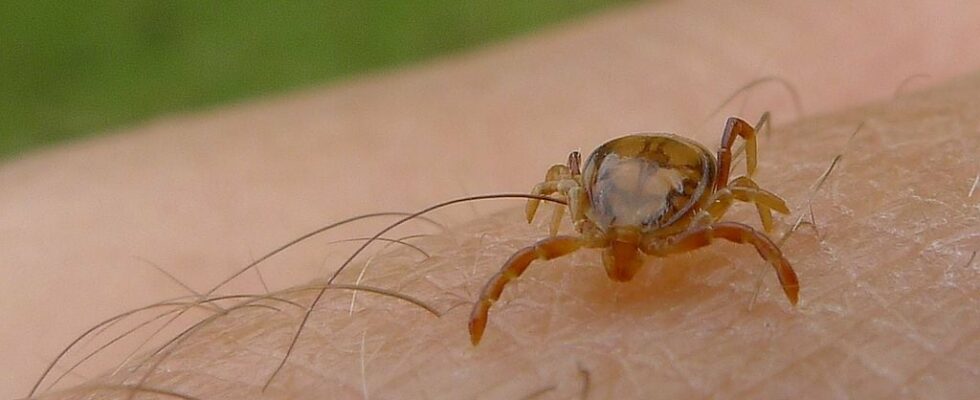Two reports in France of a case of hemorrhagic virus which is prevalent in Africa alert public health services. Could Crimean Congo fever (named after its two most serious epidemics), a sometimes fatal disease transmitted from cattle to humans by ticks, seriously emerge on French territory?
Present mainly in animals, more frequently in cattle farms, it is caused by a virus transmitted between animals or possibly to humans, by tick bites. It is the “Hyalomma marginatum” tick, with striped legs and a particularly large size (almost a centimeter), which can pass the virus from one individual or animal to another, via the blood. which she absorbed.
Most of the time, an infected person has few or no symptoms, and these are similar to a little flu. But in rare cases, the disease can degenerate into “hemorrhagic fever”, with uncontrolled bleeding which then leads to death in 10% to 40% of cases, according to figures from the World Health Organization (WHO). For the moment, no treatment has really proven effective against this disease. There is therefore little choice but to let it take its course while seeking to soothe the symptoms.
So why are we worried about this disease now?
In recent months, the virus has been detected in France twice: first in the Pyrénées-Orientales, at the end of 2023, then in Corsica, at the beginning of 2024. However, until now, the disease has been circulating mainly for decades in Africa, in Middle East and the Balkans. On the border between these latter regions, Turkey has also been particularly hard hit, with up to a thousand cases per year. But as with other diseases such as dengue, the virus is now found in countries where it was previously absent. A few human cases of Congo fever have been recorded in Spain for around ten years. “Climate change has been proven to be one of the factors that favors the circulation of the virus,” recalls a study published in 2023 in the journal Emerging Infectious Diseases.
For the moment in France, the virus has been spotted in the vast majority of detections on giant ticks. Only one case of hemorrhagic fever has been recorded in the country, and the patient had clearly contracted it abroad. The fact remains that “the fact of having detected this virus in ticks in the South of France still suggests a possibility of emergence of this disease in the coming years”, warned veterinarian Laurence Vial this last week, during a press briefing from the ANRS, a research agency specializing in infectious diseases.
How to prepare for it?
The risk of transmission to humans is currently considered low on French territory, but health authorities are already calling for common sense precautions. The most effective defense: “avoid tick bites by adopting individual protection measures, in spring and summer, in places where the tick is installed”, recommends the Public Health France agency.
These precautions are anyway useful against other diseases transmitted by ticks, such as Lyme. The most effective protection in exposed areas is to wear shoes and covering clothing, then once you return home, carefully examine whether a tick is on your skin.
